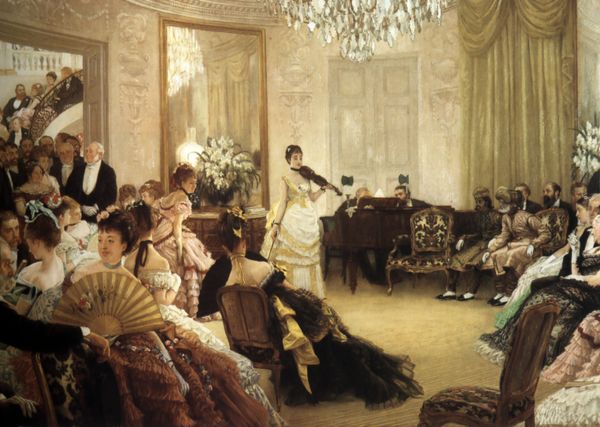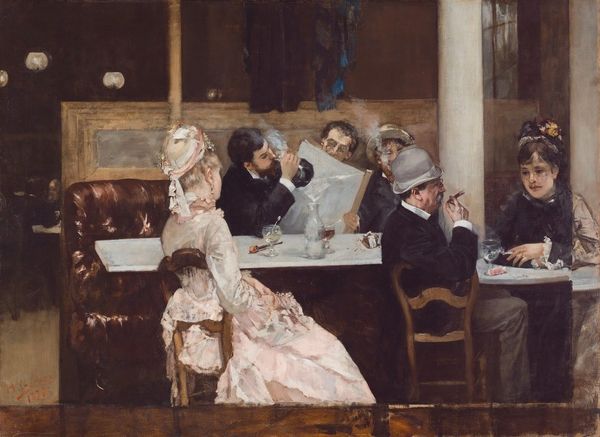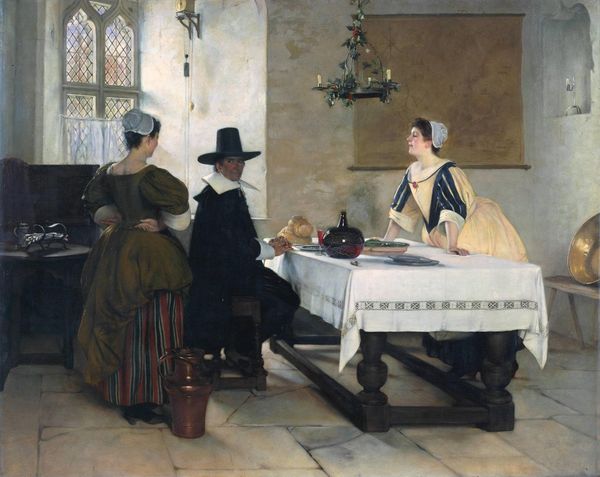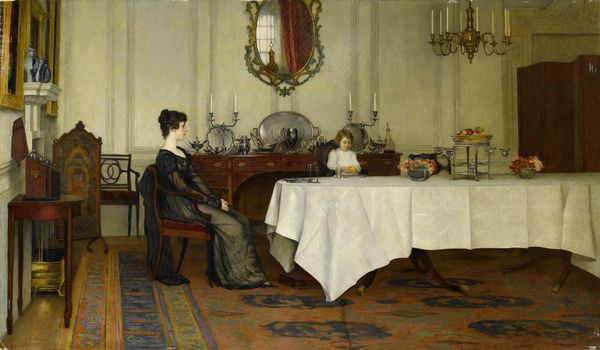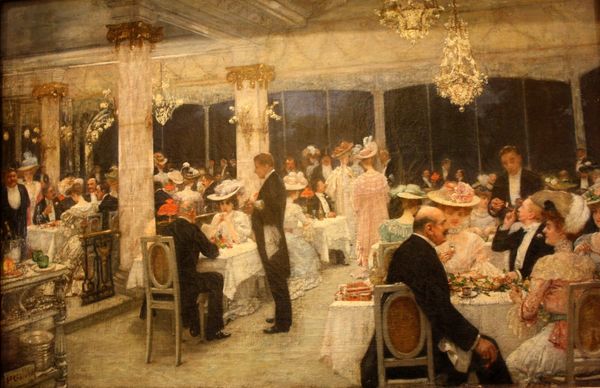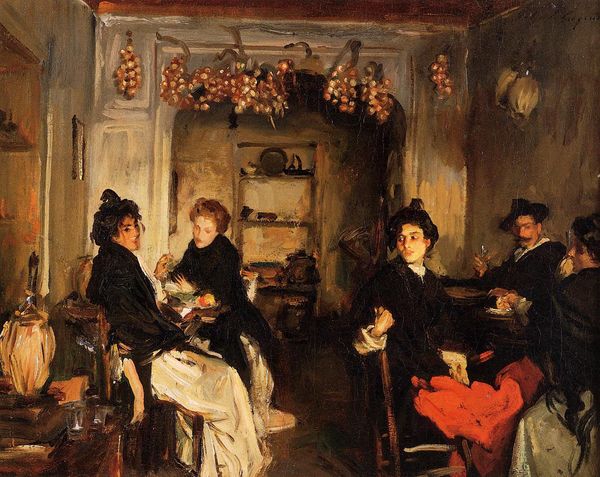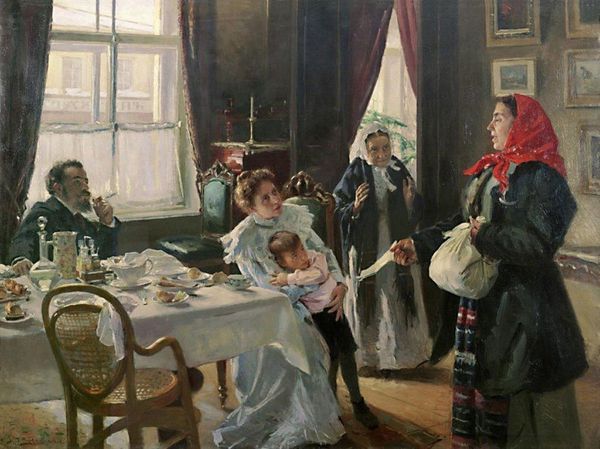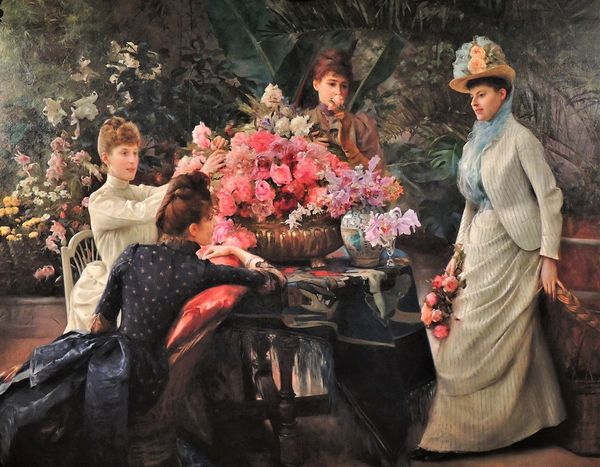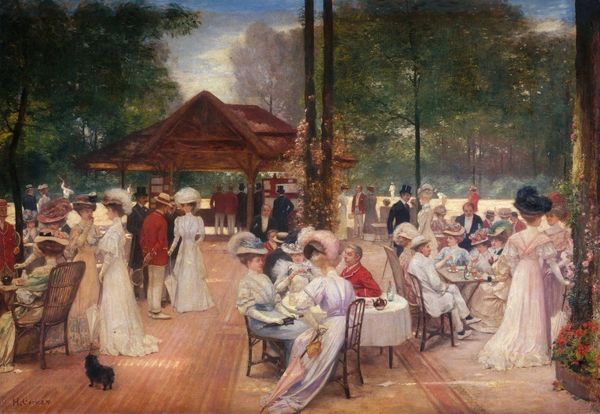
painting, oil-paint
#
portrait
#
figurative
#
painting
#
impressionism
#
oil-paint
#
figuration
#
oil painting
#
intimism
#
cityscape
#
genre-painting
Copyright: Public Domain: Artvee
Jean Béraud painted La Pâtisserie Gloppe in 1889, capturing a slice of Parisian life during the Belle Époque. It portrays a bustling pastry shop, filled with people enjoying sweet treats and drinks. The painting offers a window into the social customs of the time. Pastry shops like Gloppe were not merely places to satisfy a sweet tooth, but also social hubs, particularly for the bourgeoisie. Béraud’s painting reflects the rise of consumer culture in late 19th-century France, as well as the growing visibility of women in public spaces. The elegant attire and leisurely atmosphere suggest a society enjoying newfound prosperity and social freedom. Historians can explore sources like period advertisements, social commentaries, and even fashion magazines to deepen our understanding. By placing art within its social and institutional context, we uncover rich insights into the culture that created it.
Comments
No comments
Be the first to comment and join the conversation on the ultimate creative platform.

